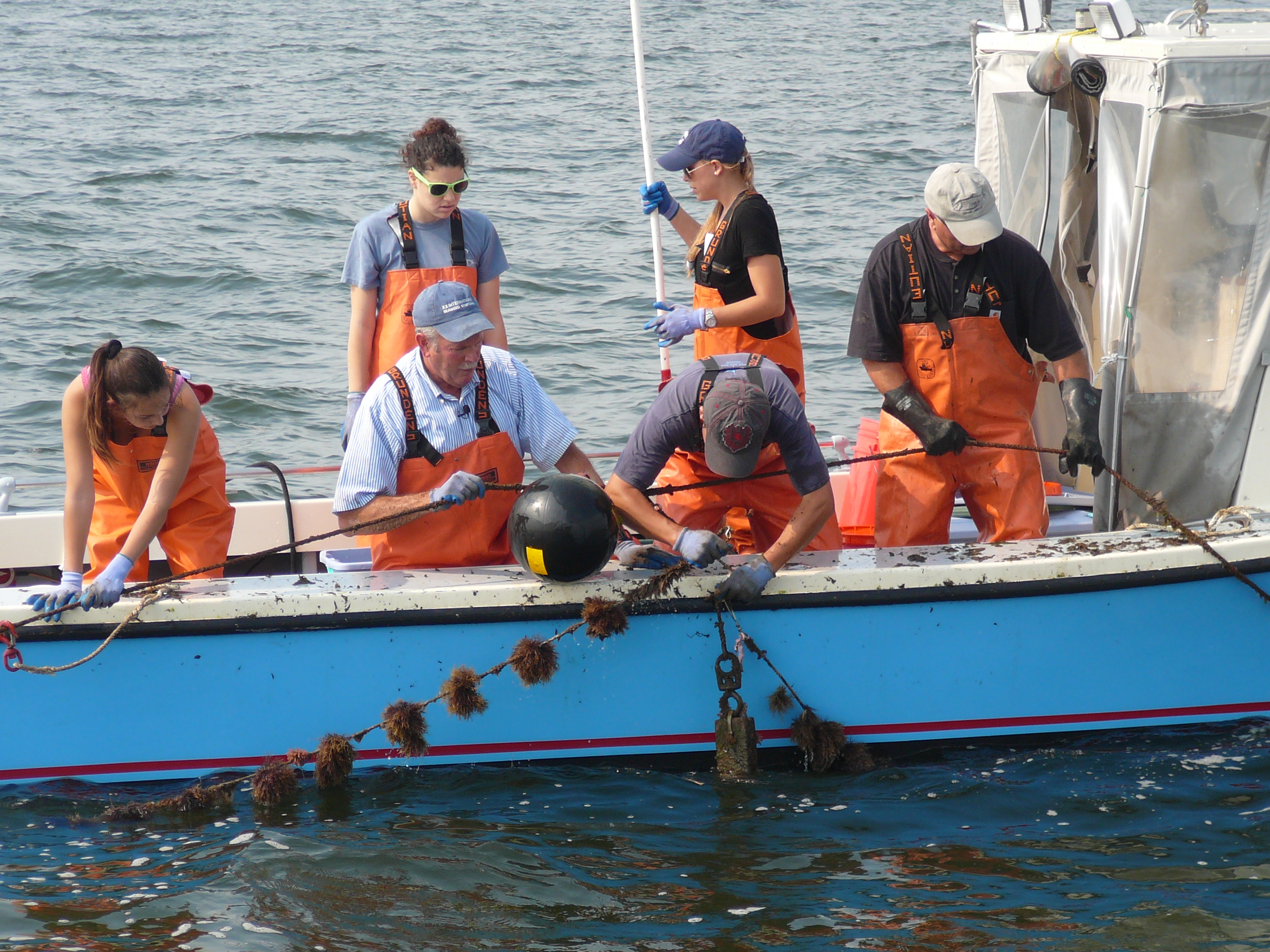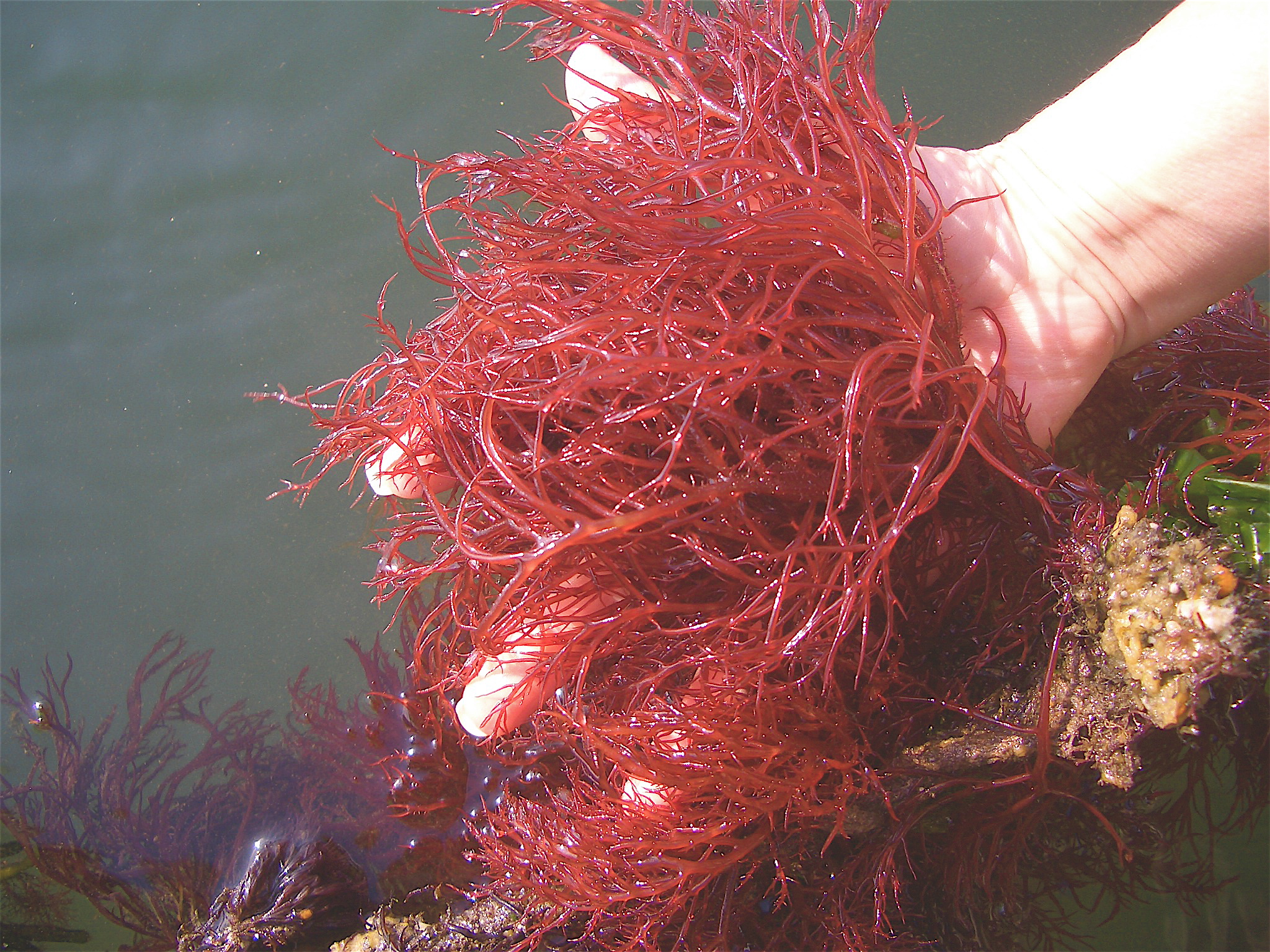While communities are investing heavily to upgrade sewage treatment plants and keep nitrogen out of Long Island Sound, researchers are studying whether mussels and kelp might be effective in removing it once it gets there.
The process is called bioextraction, and the experiments show the potential to supplement the nitrogen removal work being done at the treatment plants – with one major caveat.
Nitrogen reduction is the key to ending the annual summertime drop in dissolved oxygen, known as hypoxia, that impairs much of the Sound’s habitat. It has been the Sound’s most critical ecological problem for decades, and as recently as August 2012 hypoxia spread across more than 20 percent of the Sound (although conditions were better in 2013).
In summer, nitrogen fertilizes algae in the Sound; when the algae die, the decomposition process removes oxygen from the water, causing hypoxia.
Sewage treatment plants along the Sound are under federal order to upgrade their processes so that 58.5 percent of the nitrogen in their waste streams is removed. The deadline is 2014-2017.
The hope is that bioextraction can be a small but important supplement to the nitrogen-removal work.
Now for the caveat: for bioextraction to be effective, nitrogen-removing organisms such as ribbed mussels and kelp not only have to grow successfully, they must be harvested – extracted – from the Sound, or they will die and become part of the oxygen-removing cycle.

Researchers working the waters off the Bronx, and off Bridgeport and Branford, Ct., are testing the potential for growing mussels and seaweed on a scale that’s large enough to result in the removal of significant amounts of nitrogen. But for that to work over the long-term, there has to be a place to sell the mussels and the seaweed.
We emailed Mark Tedesco, the director of EPA’s Long Island Sound office, and asked about bioextraction’s potential, and its hurdles. Here’s what he wrote:
“The pilot projects definitely showed the potential. The larger questions of scale and markets are still being worked on.
“The market component is critical. A ‘harvest’ sent to a landfill is not viable. Both the seaweed and shellfish efforts have been investigating a variety of markets from human consumption, aquaculture feed, ‘cosmeceuticals,’ biofuels, etc. None of these will take off like Twitter, but the first kelp harvests sold out to local restaurants.”
The ribbed mussel experiment was conducted in 2011 and 2012 in the farthest western reaches of the Sound, near the Wards Island sewage plant in the Bronx. A research team, including the National Marine Fisheries Service’s Milford Lab and a local group called Rocking the Boat, used a Long Island Sound Futures Fund grant to grow ribbed mussels on ropes suspended from a raft.
The waters near Wards Island are cloudy with suspended sediments. The mussels proved proficient at removing these sediments but the researchers concluded that the mussels would be more effective in removing nitrogen if they were used in areas that had a higher concentration of phytoplankton (i.e., algae) and less suspended sediments (the example they gave was Milford Harbor).

However they also discovered that a seaweed, Gracilaria, was thriving on the raft’s ropes and that it did a good job of absorbing nitrogen. Hypothetically, the researchers estimated that a Gracilaria farm covering 2.5 acres could remove 73 to 145 pounds of nitrogen from the water during a typical July. (For comparison, when upgrades are finished at Westchester County Long Island Sound sewage plants, their permitted nitrogen discharge will be 1,768 pounds per day.)
In her book Seaweeds of Long Island Sound, Peg Van Patten, communications director for Connecticut Sea Grant, writes that Gracilaria tikvahiae, or graceful red weed, is farmed commercially in Hawaii and elsewhere as a source of agar (which is used to thicken fruit fillings for baked goods, among many other things).
Funded by Sea Grant and the Long Island Sound Futures Fund, Professor Charles Yarish of the University of Connecticut has led a team of researchers that showed how Gracilaria could be cultured in a lab and eventually transplanted into the Sound for seaweed farming. He has also been working with Bren Smith of the Thimble Islands Oyster Co. to grow kelp (Saccahrina latissima) in Branford.
Overall, the work is exciting and promising – although there is a long way to go before bioextraction can be a significant part of reducing nitrogen in the Sound.
Here at Save the Sound, we always try to not only bring you the news, but to inspire you to act and give you ideas for concrete steps to make things better. In this case, the action is simple.
As Mark Tedesco said, “Forget about broccoli, eat your kelp.”
Or, if you’re thirsty and over 21, drink it.
Posted by Tom Andersen, New York program and communications director for Save the Sound.

1 thought on “Mussels and seaweed have the potential to help clean up Long Island Sound”
Comments are closed.